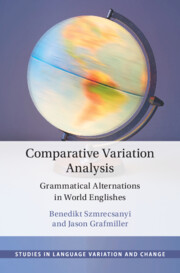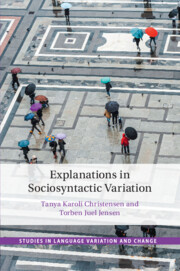4 results in Studies in Language Variation and Change

Comparative Variation Analysis
- Grammatical Alternations in World Englishes
-
- Published online:
- 24 August 2023
- Print publication:
- 07 September 2023

Meaning, Identity, and Interaction
- Sociolinguistic Variation and Change in Game-Theoretic Pragmatics
-
- Published online:
- 08 June 2023
- Print publication:
- 22 June 2023

Explanations in Sociosyntactic Variation
-
- Published online:
- 06 January 2022
- Print publication:
- 20 January 2022

Sociolinguistic Variation in Children's Language
- Acquiring Community Norms
-
- Published online:
- 06 May 2019
- Print publication:
- 23 May 2019

